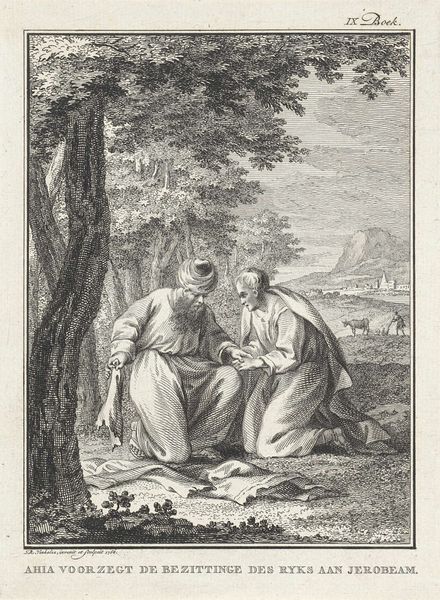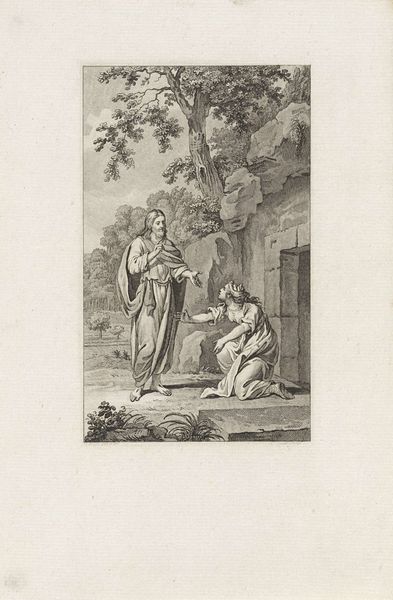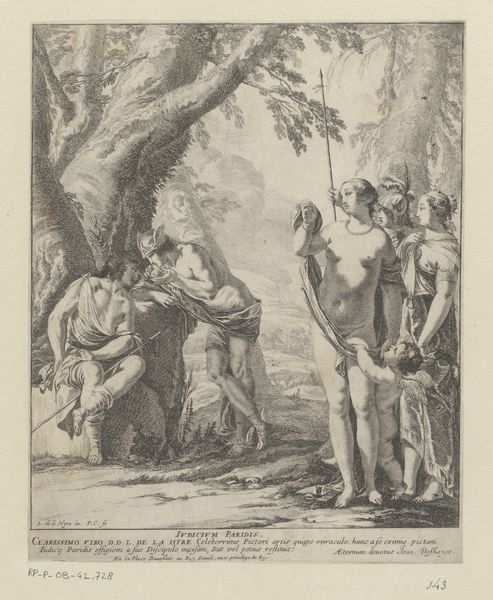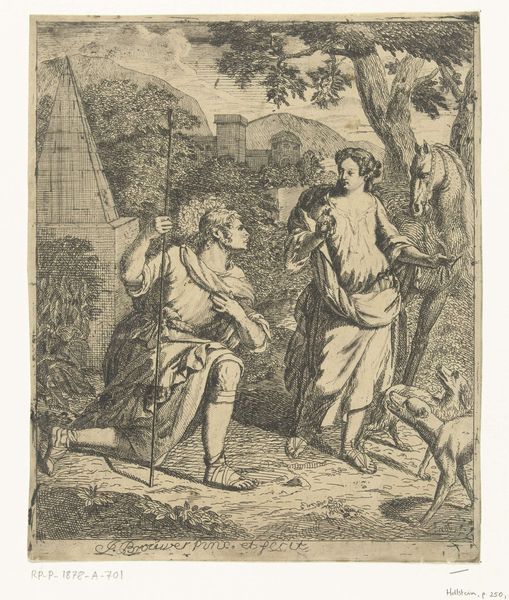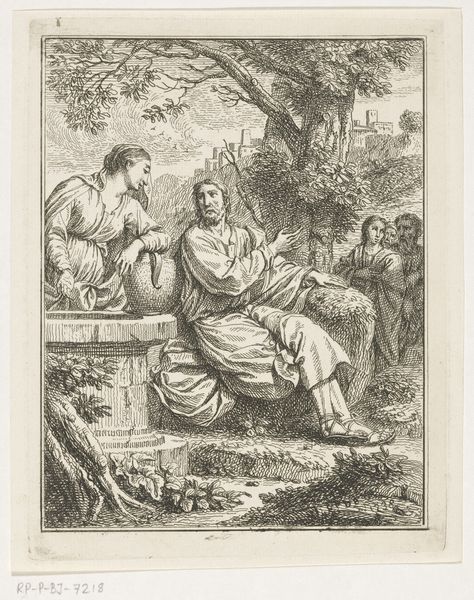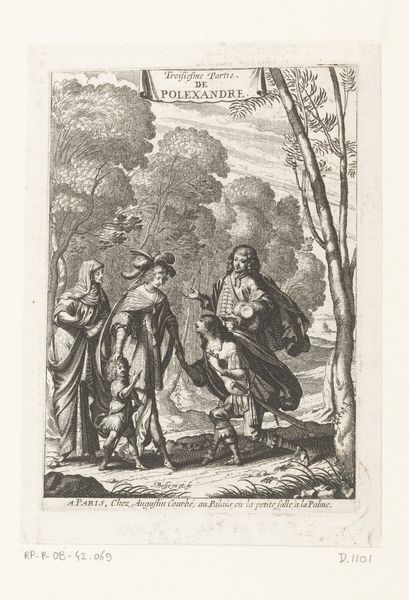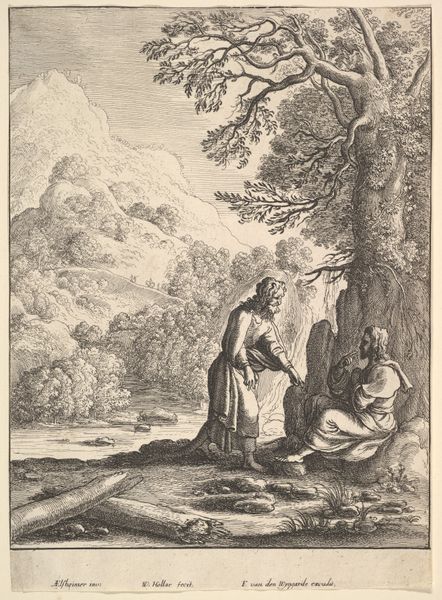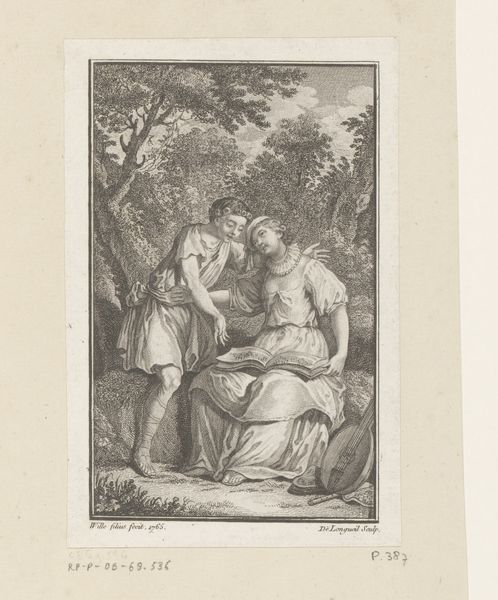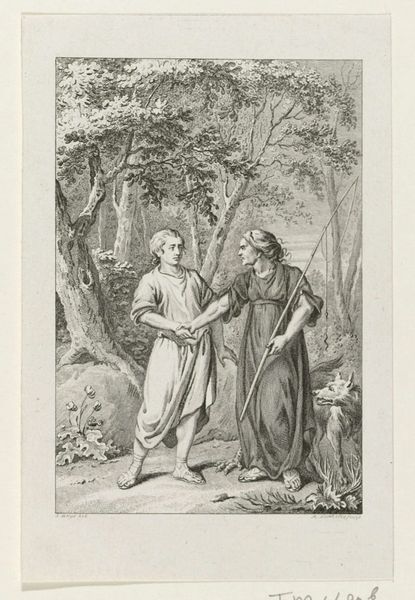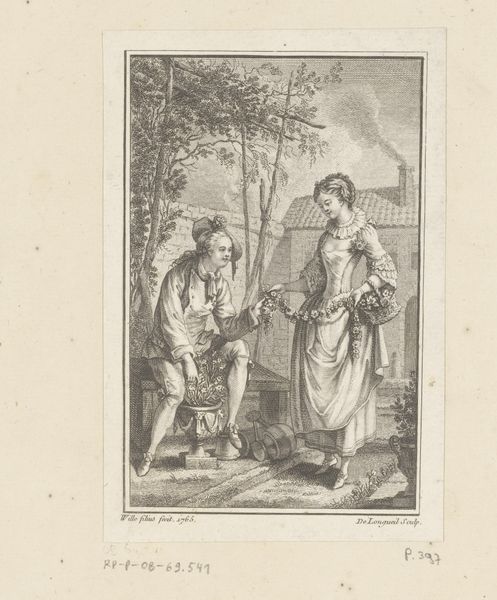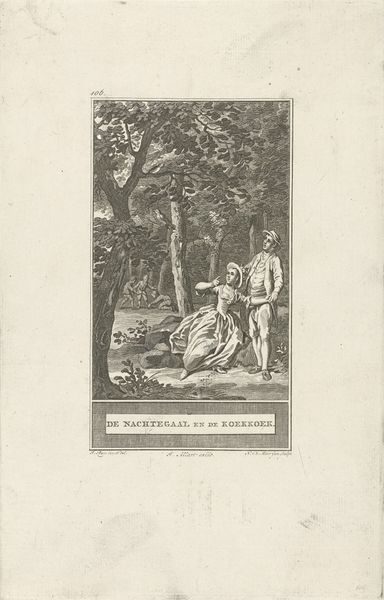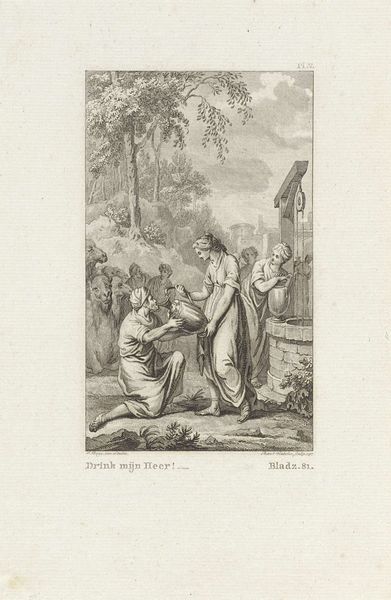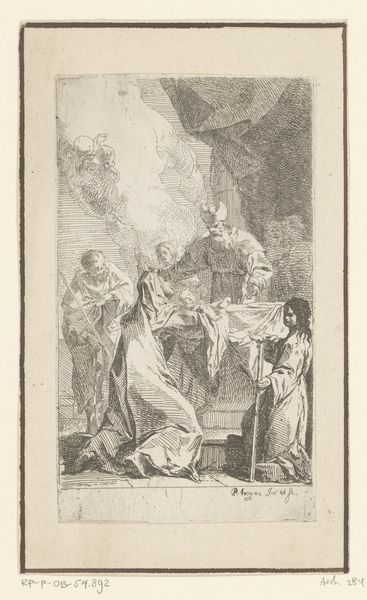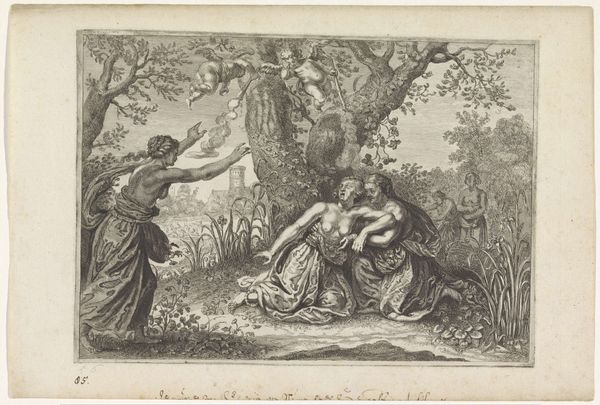
engraving
#
neoclacissism
#
narrative-art
#
figuration
#
line
#
history-painting
#
engraving
Dimensions: height 233 mm, width 155 mm
Copyright: Rijks Museum: Open Domain
Editor: This engraving, "Abraham and the Three Angels" by Reinier Vinkeles, created in 1797, strikes me as a rather formal and staged depiction of a biblical story. What do you see in this piece beyond the immediate narrative? Curator: Beyond the explicit religious subject matter, this work operates within a fascinating intersection of power, faith, and social dynamics. Consider the era. Neoclassicism, with its emphasis on reason and order, emerged during a period of upheaval. How does Vinkeles use the visual language of Neoclassicism—the clear lines, balanced composition, idealized forms—to reinforce or perhaps subtly question the authority inherent in this divine encounter? Think about the implied power dynamics between Abraham, the patriarchal figure, and these otherworldly visitors. Editor: That's a interesting, the scene looks serene. Where might that serenity fit with any power imbalance? Curator: Exactly. And note the position of Sarah, eavesdropping. The inscription even hints at skepticism. How does her marginalization within the domestic sphere—symbolized by the tent—intersect with the divine pronouncements being made? The engraving technique itself, with its emphasis on control and precision, reflects the hierarchical social structures of the late 18th century. Who gets to control the narrative? Whose voices are amplified, and whose are silenced? Editor: So it’s about power, not just a bible story in the home. Is Vinkeles endorsing that hierarchy, or commenting on it? Curator: The beauty of art is that it allows for multiple interpretations. Vinkeles may be simply reflecting the prevailing worldview, but the very act of visualizing these power dynamics invites us to analyze them critically. Editor: I never considered how the artistic style could itself be a comment on social structures. Thank you! Curator: Indeed. By examining the art historical context and social milieu in which it was created, we can unpack the complex layers of meaning embedded within it.
Comments
No comments
Be the first to comment and join the conversation on the ultimate creative platform.
